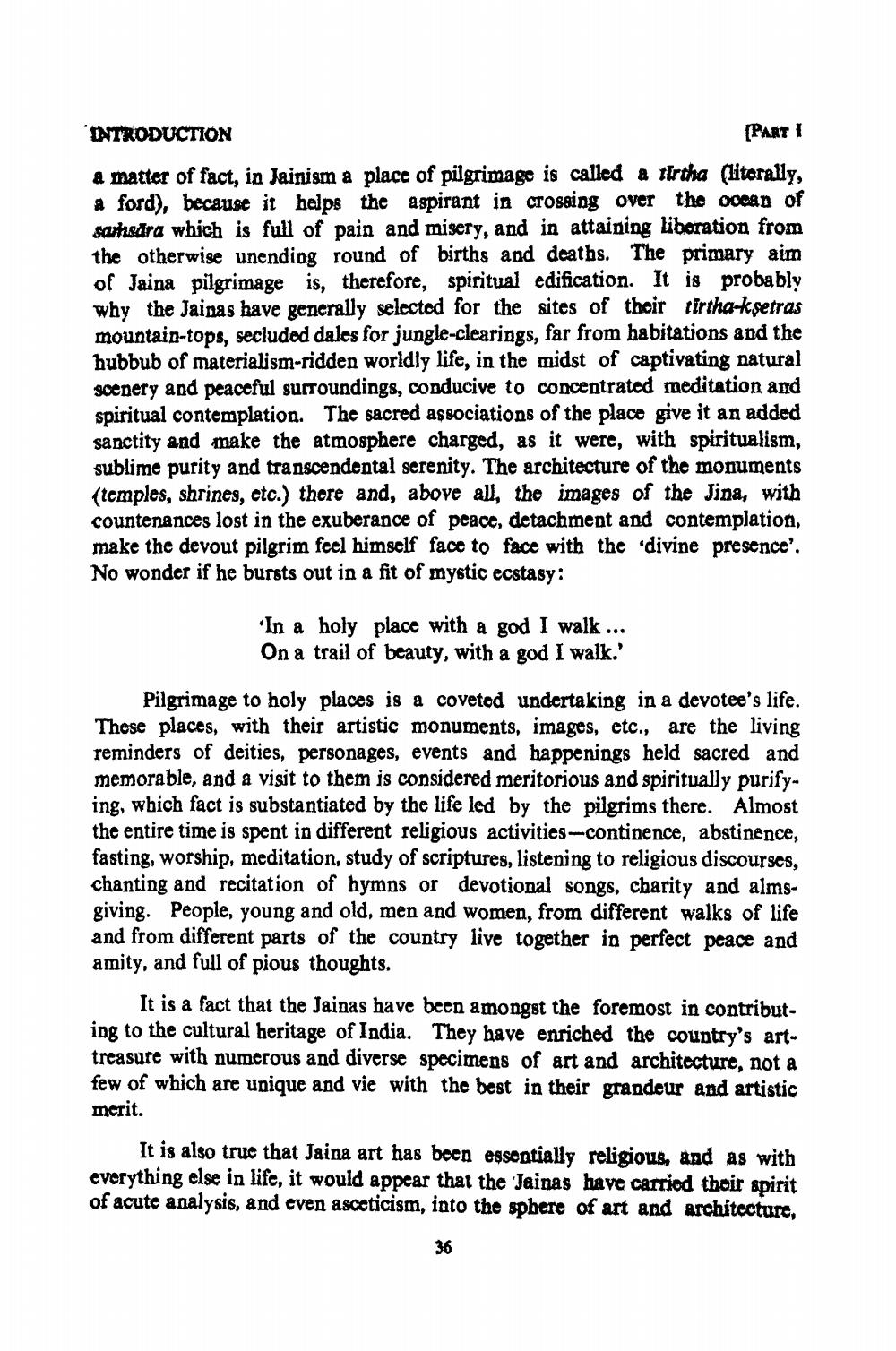________________
INTRODUCTION
(PART 1 a matter of fact, in Jainism a place of pilgrimage is called a tirtha (literally, a ford), because it helps the aspirant in crossing over the occan of sansara which is full of pain and misery, and in attaining liberation from the otherwise unending round of births and deaths. The primary aim of Jaina pilgrimage is, therefore, spiritual edification. It is probably why the Jainas have generally selected for the sites of their tirtha-ksetras mountain-tops, secluded dales for jungle-clearings, far from habitations and the hubbub of materialism-ridden worldly life, in the midst of captivating natural scenery and peaceful surroundings, conducive to concentrated meditation and spiritual contemplation. The sacred associations of the place give it an added sanctity and make the atmosphere charged, as it were, with spiritualism, sublime purity and transcendental serenity. The architecture of the monuments (temples, shrines, etc.) there and, above all, the images of the Jina, countenances lost in the exuberance of peace, detachment and contemplation, make the devout pilgrim feel himself face to face with the divine presence'. No wonder if he bursts out in a fit of mystic ecstasy:
'In a holy place with a god I walk ... On a trail of beauty, with a god I walk.'
Pilgrimage to holy places is a coveted undertaking in a devotee's life. These places, with their artistic monuments, images, etc., are the living reminders of deities, personages, events and happenings held sacred and memorable, and a visit to them is considered meritorious and spiritually purifying, which fact is substantiated by the life led by the pilgrims there. Almost the entire time is spent in different religious activities-continence, abstinence, fasting, worship, meditation, study of scriptures, listening to religious discourses, chanting and recitation of hymns or devotional songs, charity and almsgiving. People, young and old, men and women, from different walks of life and from different parts of the country live together in perfect peace and amity, and full of pious thoughts.
It is a fact that the Jainas have been amongst the foremost in contributing to the cultural heritage of India. They have enriched the country's arttreasure with numerous and diverse specimens of art and architecture, not a few of which are unique and vie with the best in their grandeur and artistic merit.
It is also true that Jaina art has been essentially religious, and as with everything else in life, it would appear that the Jainas have carried their spirit of acute analysis, and even asccticism, into the sphere of art and architecture,
36




